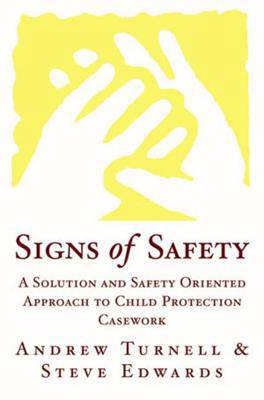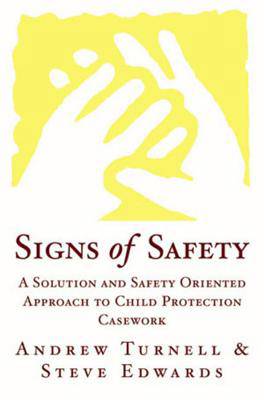
- Afhalen na 1 uur in een winkel met voorraad
- Gratis thuislevering in België vanaf € 30
- Ruim aanbod met 7 miljoen producten
- Afhalen na 1 uur in een winkel met voorraad
- Gratis thuislevering in België vanaf € 30
- Ruim aanbod met 7 miljoen producten
Zoeken
Signs of Safety
A Solution and Safety Oriented Approach to Child Protection
Steve Edwards, Andrew Turnell
Hardcover | Engels
€ 67,95
+ 135 punten
Omschrijving
It focuses on the question, "How can child protection professionals actually build partnerships with parents where there is suspected or substantiated child abuse or neglect?" The authors bring the solution orientation to child protection work, expanding the investigation of risk to encompass signs of safety that can be built upon to stabilize and strengthen the child's and family's situation. The philosophy behind this approach is clearly articulated through ten practice principles that serve as guiding beacons for child protection workers as they traverse the rough waters of abuse and neglect investigation. Child protection workers are involved with vulnerable, at-risk children in potentially volatile situations. Here they will find a new child protection assessment and planning protocol that allows for comprehensive risk assessment incorporating both danger and safety and the perspectives of both professionals and service recipients (parents). The authors provide practical, hands-on strategies for building a partnership with parents, which may, in the long run, prevent abuse and family dissolution. They illustrate these strategies in cases showing the subtle process of integrating the seemingly opposite notions of coercion and cooperation. Respectful, optimistic, and highly practical, this book promises to revitalize and redirect child protection services.
Specificaties
Betrokkenen
- Auteur(s):
- Uitgeverij:
Inhoud
- Aantal bladzijden:
- 240
- Taal:
- Engels
Eigenschappen
- Productcode (EAN):
- 9780393703009
- Verschijningsdatum:
- 17/07/1999
- Uitvoering:
- Hardcover
- Formaat:
- Genaaid
- Afmetingen:
- 160 mm x 246 mm
- Gewicht:
- 517 g

Alleen bij Standaard Boekhandel
+ 135 punten op je klantenkaart van Standaard Boekhandel
Beoordelingen
We publiceren alleen reviews die voldoen aan de voorwaarden voor reviews. Bekijk onze voorwaarden voor reviews.








